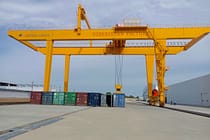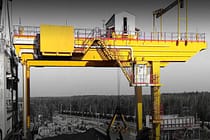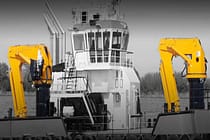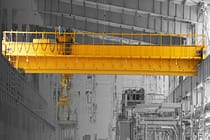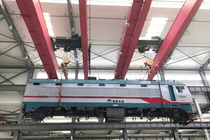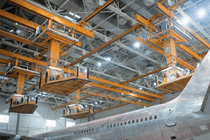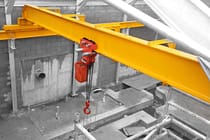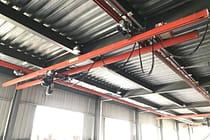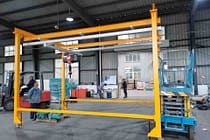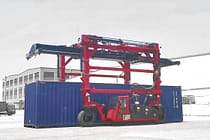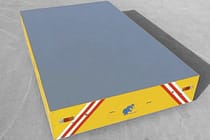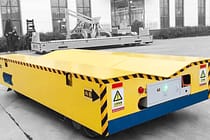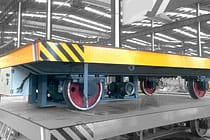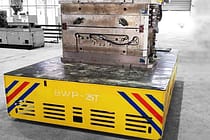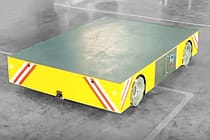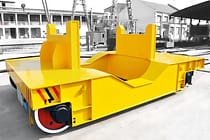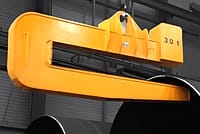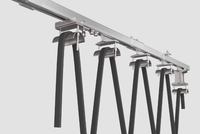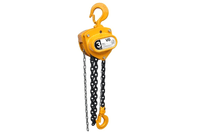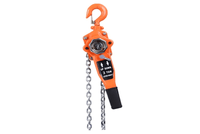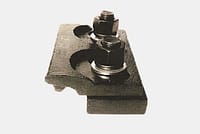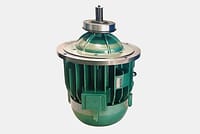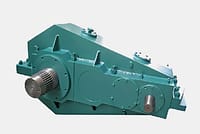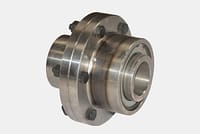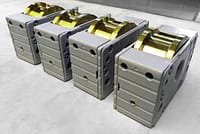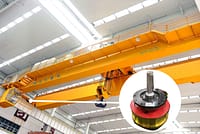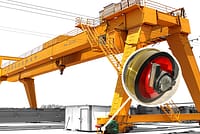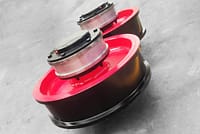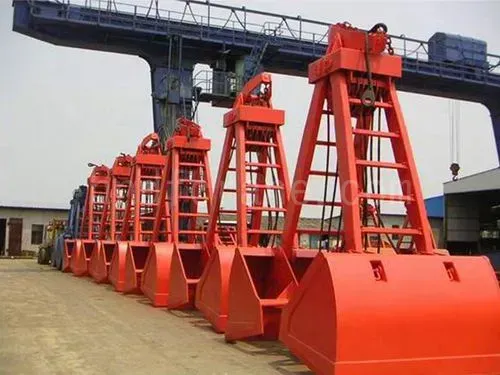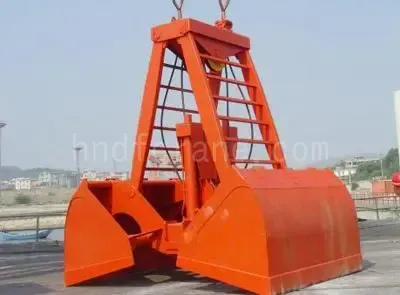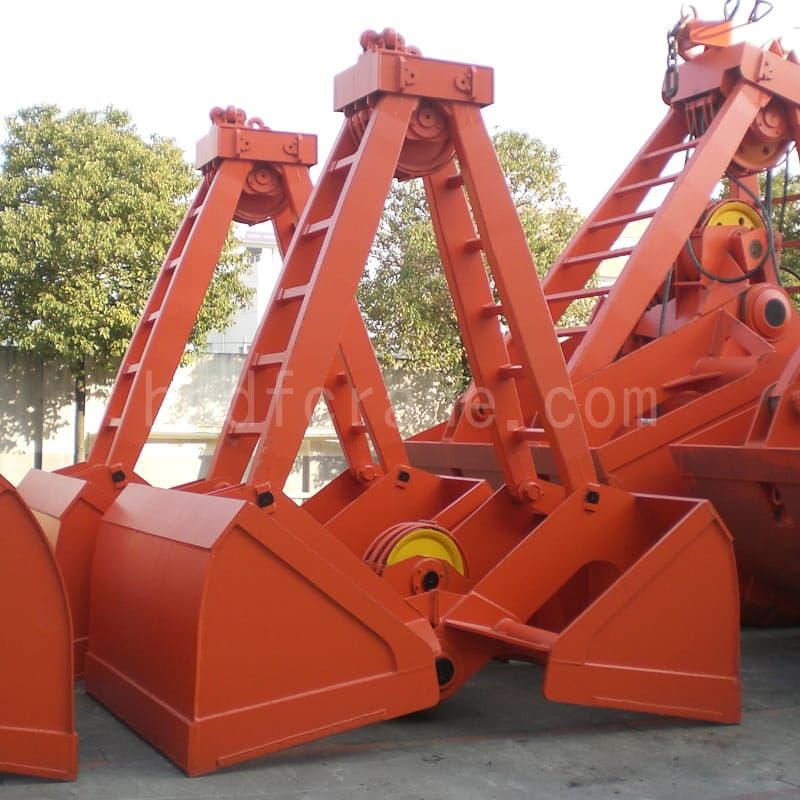مقدمة عن المنتج: المقابض الميكانيكية ذات الحبلين
إن الرافعة الميكانيكية ذات الحبلين مناسبة لجميع أنواع الرافعات ذات هيكل جهاز الرفع المزدوج، وتستخدم في الغالب في الموانئ والأرصفة وطرق البناء والجسور وغيرها من الصناعات.
وفقًا لخصائص المواد، يمكن تجهيزها بأوزان خفيفة ومتوسطة وثقيلة وثقيلة للغاية. مناسبة لالتقاط جميع أنواع التراكمات السائبة.
ثم رافعات مختلفة. مجهزة بمجموعتين من بكرات المحرك (أي الرافعات الكهربائية)، كل مجموعة من البكرات تؤدي إلى حبل سلكي، واحد منها يعمل كدعم لإطار التوازن، والحبل السلكي الآخر يمر عبر بكرات العارضة العلوية والسفلية لتشكيل كتلة بكرة، والتي تلعب دورًا في الفتح.
تعتبر أدوات الرفع الميكانيكية ذات الحبلين أداة فعالة لتحميل وتفريغ البضائع السائبة مثل الرمل الأصفر والفحم ومسحوق الخام والأسمدة السائبة في مختلف البيئات القاسية.
تتميز مقابض صدفية الحبل الميكانيكية ذات هيكل بسيط وآلية فتح وإغلاق جديدة وسهلة التشغيل ويمكنها إكمال عمليات الفتح والإغلاق بدقة في حالات مختلفة.
تعتمد المقابض الميكانيكية ثنائية الحبل على تصميم افتراضي ثلاثي الأبعاد، ويتم استخدام برنامج ANSYS لتحليل القوة والتحقق منها. توزيع الوزن أكثر منطقية وعمر الخدمة أطول.
تم تجهيز شعاع المحمل العلوي للمقابض الصدفية الميكانيكية ذات الحبلين بمسامير يمكن توصيلها مباشرة بحبل الرفع الخاص بالرافعة.
المعايير الفنية من المقابض الميكانيكية ذات الحبلين

| النوع والحجم | مقدار(م3) | الوزن الميت | الأبعاد(مم) | شيف ضياء.(مم) | استخدم الارتفاع(م) | قطر الحبل الفولاذي.(مم) | SWL(ت) | ||||
| أ | ب | ج | د | هـ | |||||||
| BS3[1.2]1.3A | 1.2(300) | 1.4(4) | 1900 | 2537 | 2488 | 2841 | 1200 | ø400 | 9 | 17.5 | 3 |
| BS3[1.6]1.4A | 1.6(300) | 1.4(4) | 2100 | 2631 | 2559 | 3040 | 1300 | ø400 | 9.5 | 17.5 | 3 |
| BS5[1.5]2A | 1.5(350) | 2(3) | 2000 | 2659 | 2667 | 3075 | 1260 | ø445 | 8.5 | 19.5 سم | 5 |
| 2(4) | 9.8 | ||||||||||
| BS5[2]2A | 2(350) | 2(4) | 2100 | 2778 | 2818 | 3248 | 1400 | ø445 | 10 | 19.5 سم | 5 |
| BS5[2.5]2أ | 2.5(350) | 2(3) | 2100 | 2787 | 2715 | 3091 | 1600 | ø445 | 8.5 | 19.5 سم | 5 |
| BS5[3]2أ | 3(400) | 2(3) | 2300 | 3130 | 2938 | 3362 | 1650 | ø445 | 9 | 19.5 سم | 5 |
| BS8[2.6]3.2A | 2.6(300) | 2.6(4) | 2300 | 3038 | 3257 | 3736 | 1800 | ø560 | 11 | ø26 | 8 |
| BS8[3]3.3A | 3(300) | 3.3(4) | 2380 | 3118 | 3287 | 3786 | 1900 | ø560 | 11.5 | ø26 | 8 |
| BS8[3.8]3.5A | 3.8(300) | 3.5(4) | 2550 | 3536 | 3286 | 3733 | 2000 | ø560 | 12 | ø26 | 8 |
| BS8[4.5]3.8A | 4.5(300) | 3.8(3) | 2500 | 3505 | 3503 | 3975 | 2300 | ø560 | 12 | ø26 | 8 |
| BS10[3]4A | 3(300) | 4(4) | 2380 | 3118 | 3287 | 3786 | 1900 | ø560 | 11.5 | ø28 | 10 |
| BS10[5]4A | 5(350) | 4(4) | 2615 | 3605 | 3503 | 3975 | 2400 | ø560 | 12 | ø28 | 10 |
| BS10[6]4A | 6(400) | 4(4) | 2800 | 3814 | 3758 | 4290 | 2150 | ø560 | 12.5 | ø28 | 10 |
| BS16[3.6]6A | 3.6(300) | 6(5) | 2500 | 3313 | 3810 | 4206 | 2100 | ø720 | 13.5 | ø32 | 16 |
| BS16[4]6A | 4(350) | 6(5) | 2500 | 3313 | 3810 | 4206 | 2200 | ø720 | 13.5 | ø32 | 16 |
| BS16[6]6A | 6(350) | 6(4) | 2900 | 3800 | 4249 | 4612 | 2400 | ø720 | 13.5 | ø32 | 16 |
| BS16[10]6أ | 10(400) | 6 (3) | 3200 | 4000 | 3938 | 4673 | 2500 | 650 ملم | 12 | ø28 | 16 |
كيفية اختيار المسكة الصحيحة
- وضح هدفك:
قبل الخوض في الخيارات، يرجى توضيح متطلباتك المحددة. اسأل نفسك:
- ما هي المواد التي تريد التعامل معها؟ (الجذوع، الخردة المعدنية، الحجر، الخ.)
- ما هي المهام التي ستقوم بها الرافعة؟ (التحميل، الفرز، التفكيك، وما إلى ذلك)
- ما نوع الجهاز الذي سيتم توصيله به؟ (رافعة جسرية، رافعة علوية)
- ما هي الكثافة النوعية للمادة التي تمسكها؟ عدد مكعبات الممسكة؟
ما هي حمولة الرافعة الخاصة بك المجهزة بالمقبض؟
وفقا لخصائص المادة التي يتم الإمساك بها، يتم تقسيم الإمساك عادة إلى أربعة أنواع أساسية: خفيفة ومتوسطة وثقيلة وثقيلة للغاية.
| نوع المادة المراد التقاطها | الاستيلاء على المواد | وزن السعة (طن/م³) |
| ضوء | الكوك، الخبث، الحبوب، البطاطس، الجير الأنثراسيتي متوسط الجودة، الأسمنت، التربة، الحصى، الطين، الطوب المكسور، إلخ. | 0.5~1.2 |
| واسطة | الخث، قطع كبيرة من الفحم الحجري، الفحم المضغوط، الطين، الحجر الجيري، الحصى، الملح، الحصى، الطوب، البوكسيت، رقائق أكسيد الحديد، الأسمنت، الرمل والطوب في الماء، الخ. | 1.2~2.0 |
| ثقيل | الحجر الجيري، والطين الثقيل، والخامات الصغيرة والمتوسطة الحجم، والصخور الصلبة، وأكسيد الحديد على شكل قضيب، وخام الحديد، ومسحوق تركيز الرصاص، وما إلى ذلك. | 2.0~2.6 |
| الوزن الزائد | خامات كبيرة، خام منجنيز كبير، مسحوق خام الرصاص المتكتل الرسوبي، الخ. | 2.6~3.3 |
- التوافق مع الملحقات: تأكد من أن المقبض متوافق مع المعدات الموجودة.
- اعتبارات الميزانية: يختلف نطاق الأسعار للمقبض. قم بموازنة ميزانيتك بناءً على وظيفة ومتانة المقبض.
- التعليقات والاقتراحات: ابحث عبر الإنترنت، واقرأ تعليقات المستخدمين، واطلب الاقتراحات من نظرائك في الصناعة.
- اذهب إلى الشركة المصنعة للرافعة لإجراء فحص واختبار في الموقع قبل الشراء: اختبار الأداة في ظل ظروف حقيقية قدر الإمكان. قم بتقييم أدائها وسهولة استخدامها ووظائفها بشكل عام.
ضع في اعتبارك أن اختيار المقبض المناسب يتطلب التوازن بين الوظيفة والسلامة والتكلفة. من خلال النظر في هذه العوامل،








